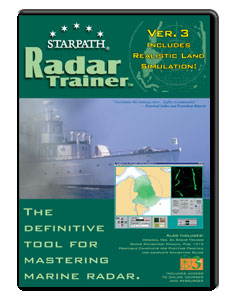

- #Ship radar simulator software
- #Ship radar simulator simulator
Most OSP components are open source licenced under MPL 2.0, meaning only updates/improvement to the components must be shared back to the community, while applications employing the components can be kept private. On the main console is the electronic vessel conning station, Radar/ARPA.
OSP Reference Models: a set of example model implementations adhering to the Interface Specification, serving as a starting point and inspiration for your own models. The Simulation Center houses a total of 11 full-mission simulators with. OSP Interface Specification: an emerging standard and ontology for simulation models of maritime equipment and systems. Demo applications and examples showcasing the use of the library, as well as a range of supporting tools. The result is a grayscale scene where it is possible to visually. The pseudo-simulation is carried out taking in account only the scene geometry and following simple rules. #Ship radar simulator simulator
from naval and maritime through to security and air surveillance. dSARsim is a free and open-source dummy Synthetic Aperture Radar (SAR) simulator written in python v3 which is suited for didactic purposes.
#Ship radar simulator software
OSP libc osim : a C/C++ library for co-simulation, ready to be integrated into any simulation software in need of co-simulation capabilities. Simulation of primary radar video, navigation data, AIS, primary tracks, IFF and ADS-B. Dive into the research topics of Compact HF Surface Wave Radar Data Generating Simulator for Ship Detection and Tracking.To enable cross-organization cooperation and platform interoperability by transparency and open-source principles.
 To establish a standard for connecting models and control systems from any simulation tool or programming language in one, large co-simulation to enable virtual system integration. Enable the re-use of simulation models and digital twin equipment across organizations without exposing sensitive IP by protecting models and control system software inside black-box executables. The OSP sets out to change this by providing the maritime industry with key tools and working processes for technical systems engineering, enabling efficient and effective construction and maintenance of digital twins for system integration, testing and verification.īuilding on the Functional Mockup Interface (FMI) standard, the key principles are to: A ship is a huge piece of machinery and it is too expensive for most training institutes to arrange or own a ship. Why Simulate The answer to this question is relatively simple. With steadily increasing complexity due to the increasing use of software in ship systems, the integration of equipment and systems from many providers and a gap in systems engineering traditions, the consequence is apparent: I t has become increasingly difficult to design, build, operate and assure ships and other maritime/offshore assets, and to balance cost with environmental footprint and safety. Ship simulation software is widely used for training and testing purposes these days, and is finding its use in the marine industry as well as we shall in our article. The Open Simulation Platform (OSP) is an open-source industry initiative for co-simulation of maritime equipment, systems and entire ships.
To establish a standard for connecting models and control systems from any simulation tool or programming language in one, large co-simulation to enable virtual system integration. Enable the re-use of simulation models and digital twin equipment across organizations without exposing sensitive IP by protecting models and control system software inside black-box executables. The OSP sets out to change this by providing the maritime industry with key tools and working processes for technical systems engineering, enabling efficient and effective construction and maintenance of digital twins for system integration, testing and verification.īuilding on the Functional Mockup Interface (FMI) standard, the key principles are to: A ship is a huge piece of machinery and it is too expensive for most training institutes to arrange or own a ship. Why Simulate The answer to this question is relatively simple. With steadily increasing complexity due to the increasing use of software in ship systems, the integration of equipment and systems from many providers and a gap in systems engineering traditions, the consequence is apparent: I t has become increasingly difficult to design, build, operate and assure ships and other maritime/offshore assets, and to balance cost with environmental footprint and safety. Ship simulation software is widely used for training and testing purposes these days, and is finding its use in the marine industry as well as we shall in our article. The Open Simulation Platform (OSP) is an open-source industry initiative for co-simulation of maritime equipment, systems and entire ships.






 0 kommentar(er)
0 kommentar(er)
